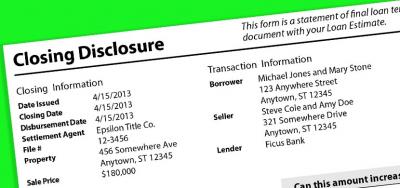You are viewing our site as a Broker, Switch Your View:
Agent | Broker Reset Filters to Default Back to ListDon't Get Thrown by Doc Overhaul
July 02 2015
 Timely closings will require advance planning under new compliance rules.
Timely closings will require advance planning under new compliance rules.
August 1 will be a big day for real estate professionals because that's when two new closing forms—a Loan Estimate and a Closing Disclosure—will replace the three forms you're used to working with: the HUD-1 Settlement Statement, the Good Faith Estimate, and the Truth-in-Lending disclosure form.
The purpose of the new forms, which were created by the Consumer Financial Protection Bureau with input from consumers and industry groups, including the National Association of REALTORS®, is to consolidate information and make it simpler for consumers to compare how close their costs are to what was originally estimated by the lender. The first page of the new Loan Estimate and the new Closing Disclosure are formatted in exactly the same way, so you and your clients can easily compare costs and note any changes. Expect refinements to the forms after they are released as the CFPB sees how well they work in the real world.
Although the information required isn't much different, some of the compliance requirements are new. NAR analysts say the new procedures could prove challenging for two reasons.
First, the CFPB is requiring the closing disclosure to be given to the buyer three days before closing. That is to allow consumers time to look carefully at any deviations from the original estimates rather than make them consider the changes while the closing is underway. That is a positive change for consumers, but it means if you're used to getting everything done at the last minute, you'll have to do a better job of planning ahead to accommodate the new rules.
If there are any changes to the loan product or the interest rate once the closing disclosure has been given to the buyer, that could trigger a new three-day waiting period. Other changes requiring lender approval could add even more time to the waiting period. The additional holding period can be waived in certain emergency situations, such as an impending bankruptcy.
These timing issues make it important to complete your paperwork and have it fully reviewed by all parties well before you get to the closing table. NAR recommends you give yourself a seven-day cushion before closing to get everything done. To that end, make sure buyers have seen the paperwork at least a week before a scheduled closing and that sellers do nothing at the last minute that could derail a transaction, like removing a light fixture that they agreed in the sales contract to leave in the house (see related story). You'll also want to schedule the buyer's walk-through well before the closing date so if anything is amiss, issues can be worked out well before the closing.
Given the possibility of changes triggering another waiting period or a last-minute change requiring lender approval, you should assume it will take an additional 15 days to complete a closing, NAR analysts say. That means if closings in your state typically take 30 days, allow 45 days. Over time, as the industry adjusts to the changes, those additional days might no longer be necessary. But for now, plan for a longer process.
To view the original article, visit the Realtor®Mag blog.









